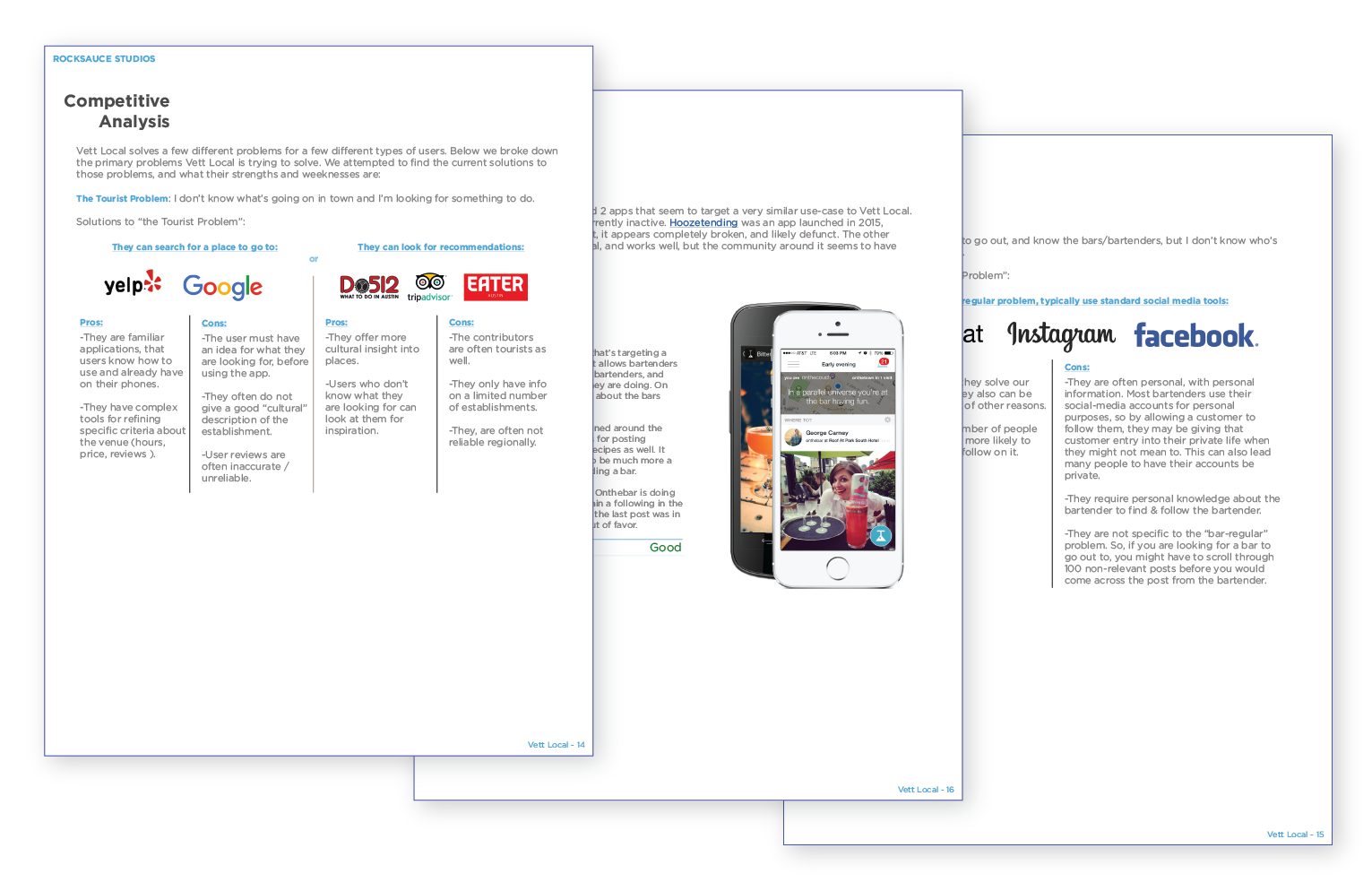Vett Local
The Project
Vett Local came to us with an already-developed app that targeted bars and bar patrons. The existing interface allowed bars to promote themselves by posting images, drink deals, and specials. Patrons could view the feed for bars they already followed or find new bars in their area.
The Problem
The Vett Local app was built and launched by another agency. When the client approached us, it had been marketed for approximately six months without gaining much traction in the marketplace. The client wanted invest further in the idea, but wasn’t sure where to go with the product.
My Role
During the sales phase, I was brought in to learn about the app and recommend potential next steps. Based on the current product, I had a few ideas about what the issues might be standing in the way of the app performing better. I wanted to learn more about the target users, so I advocated for a customized research phase to identify the successes, failures, and route forward for the product. I owned the research process, conducting interviews, building personas, doing competitive analysis, and making strategic recommendations for the product.
Personas
We developed a series of questions to learn more about Vett Local’s target demographic. We wanted to understand their interactions and relationships to bars and bartenders, how they interact with social media, and their reactions to the app itself.
To conduct interviews, we spent a few evenings in the bar districts in Austin, speaking with bar-goers and bartenders on the street. The recorded interviews were later transcribed and analyzed to determine patterns and themes.
Overall, interviewees responded positively to the idea of using bartenders as the “face” of the bar, providing a more personal understanding of the culture of the bar. Some interviewees, however, brought up concerns about potential safety issues for bartenders if patrons had the ability to follow them or know when they were working.
One of the biggest issues that emerged during interviews was that the app didn’t have the critical mass of bars participating to keep users’ interest. We repeatedly heard that users would be interested the app if it were better populated.
Personas from Vett Local Document
Competitive Analysis
We wanted to use the competitive analysis to get a thorough understanding of Vett Local’s market position and identify what the app does uniquely better than its competitors. We looked at apps that people use for similar purposes as Vett Local—bar-goers finding places to visit, and bar-owners/bartenders promoting their establishments.
Vett Local targeted two distinct groups of users with different needs: locals looking for the best spot to visit on a given night, and tourists unsure about which bars match their tastes.
Competitive Analysis from Vett Local Document
Recommendations
Vett Local was in a market with a fair amount of competition, but had a novel approach that we found was compelling to the audience. There had been other apps to leverage similar approaches in established markets with great success, and there were many possible paths forward for Vett Local.
Across all of the information we gathered, the theme that emerged again and again—and that was that the major impasse to scaling the app—was the need for a user pool large enough to make engagement compelling. Solutions to this problem needed to either make the app more useful to a small user base, or enable the application to scale more rapidly.
Two recommendations we developed targeted the audience-scaling issue:
Make Vett Local into a web app so that bars’ pages would be search-discoverable and tourists could access content without committing to an app download.
Build in a cross-posting app to enable bartenders to publish Vett Local content across multiple social networks.
Recommendations from Vett Local Document
The Outcome
The client responded positively to our recommendations and is currently working to secure funding to implement them.




